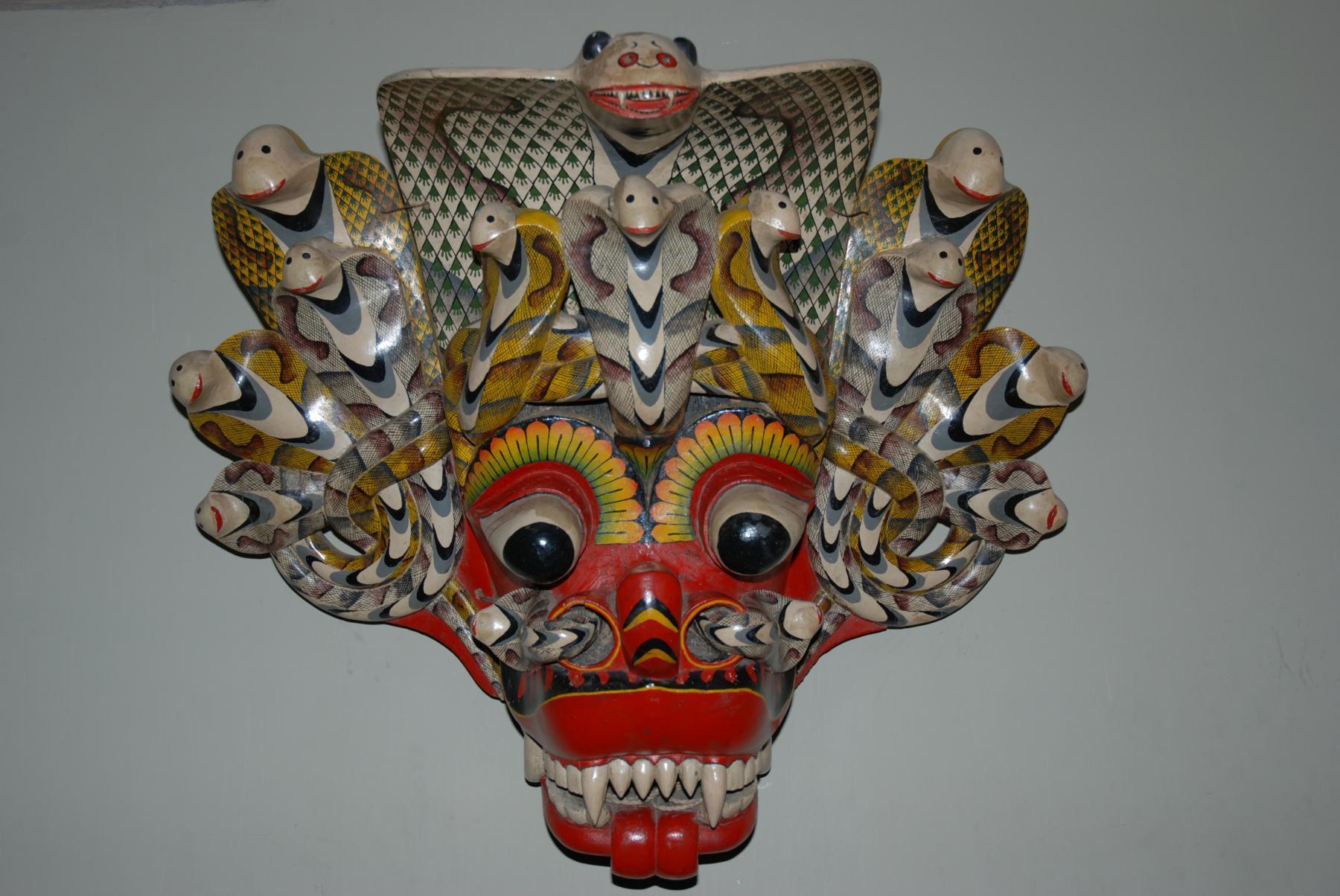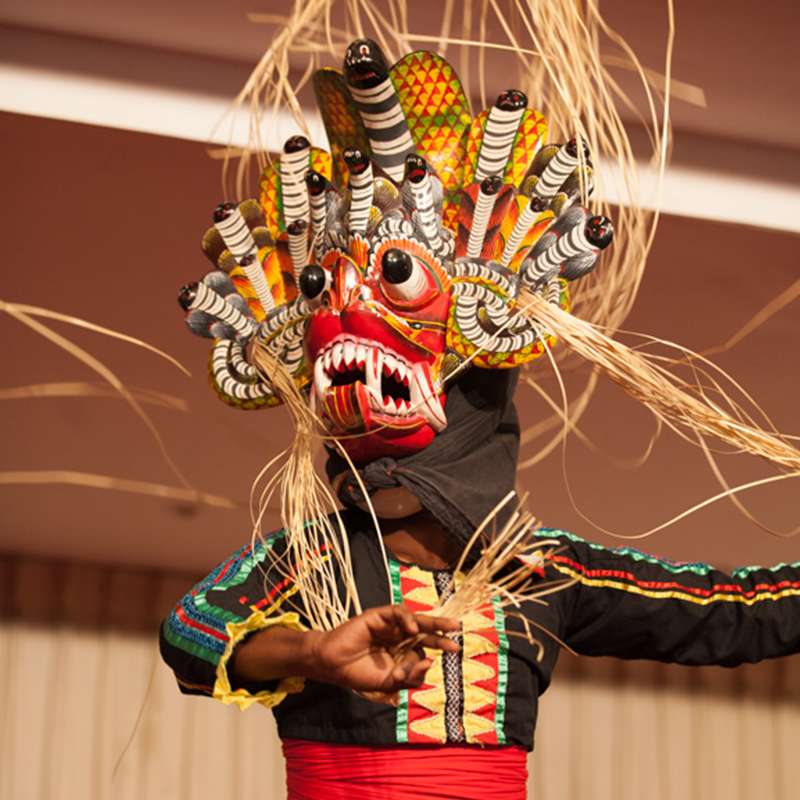Kolam Mask called "Naga Rassa" (නාග රාස්ස)
2022 April 02

Ny Janaka Samarakoon
The Nâga Rassa mask is used in the kolam performance, a "rural opera" practiced in the coastal cities of southern Sri Lanka. The Sinhalese word for this dance and its masks means "masquerade," "fantastic apparition," or "aberration."
Built around a myth that dates back to the legendary royal couple Mahasammatha, the Kolam consists of several unrelated episodes, with the narrative taking the form of dialogues, verse texts, dance, and mime. Primarily organized to heal a pregnant woman from her supposed unhealthy desires, following the example of Queen Mahasammatha and according to popular belief, this "dance piece" carries a moral message. It draws on the life of Buddha or ironic stories dealing with the human condition.
The polychrome wooden object, housed in the Mask Museum in Ambalangoda [1], Sri Lanka's mask capital, is the work of the most illustrious member of the mythical Ariyapala lineage, Ariyapala Gurunnanse [master].
This mask represents the "cobra-demon" whose face is surrounded by a fan of cobras arranged in two superimposed registers, forming three zones that emphasize the architecture of the head and shape the demon's forehead and ears. The shades of gray, ochre, yellow, and green, resembling the natural colors of snakes, contrast with the bright red hues of the face. Through contrast and alternating colors, the artisan highlights the tripartite structure of the object while creating an effect of wriggling and proliferation of snakes. The demon's eyes protrude from their sockets, and two cobras emerge from its nostrils; its open mouth displays oversized fangs, a characteristic element of all Sri Lankan demon masks.

Image courtesy © OAK - RAY REGENCY
The appearance of Nâga Rassa on stage is part of the Rassa Kolama, which features twenty-four demons. At this stage of the narrative, this particular element introduces a dimension of horror to the theatrical representation. The aim is to expel the unhealthy desires that allegedly possess the body of the mythical queen through fear. The desires are seen as malevolent spirits. Although the stage trembles at the sight of Nâga Rassa, its fate quickly changes when facing the formidable Gurula [2], the king of birds and the nemesis of snakes. Gurula will drive away the demon and restore order on stage, just as it did in the legend when, at the dawn of time, it destroyed the venomous snakes of Lanka to make the land a habitable place.
This mask, intended to fascinate and frighten spectators, has intrigued researchers and was known in Europe since the early 19th century through the writings of English observers. One representation of Nâga Rassa was exhibited at the Ceylon Pavilion during the 1900 Universal Exhibition held in Paris. Nâga Rassa illustrates the complexity of Sinhalese mythology, where popular fears conveyed by collective memory intertwine with legends and religions.



